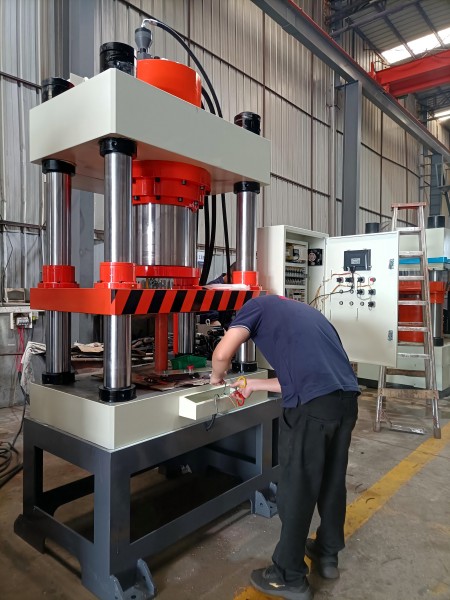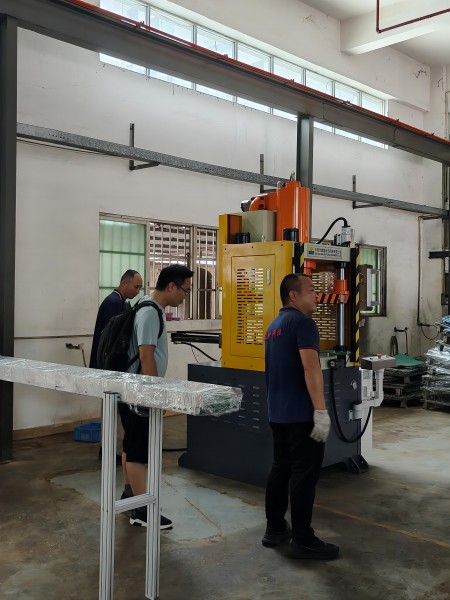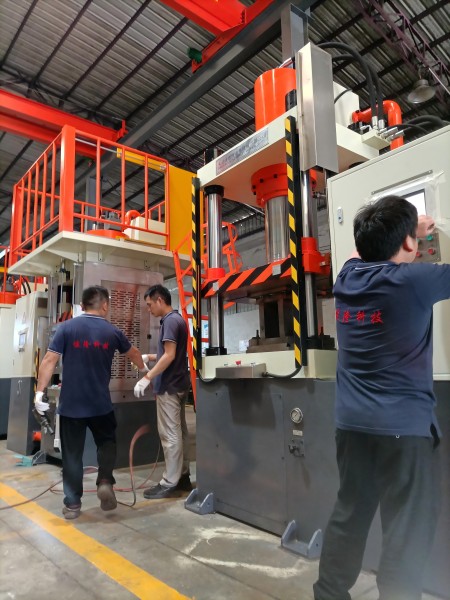The failure of the hydraulic press master cylinder to move is one of the common faults in the operation of the hydraulic system. This situation may be caused by a variety of factors, including problems with the hydraulic system itself, control circuit failure or mechanical jamming. The following are common reasons for the failure of the hydraulic press master cylinder and their treatment methods。

1. Reasons for the failure of the hydraulic press master cylinder
1.1 Insufficient hydraulic oil or oil circuit blockage: Insufficient hydraulic oil in the hydraulic oil tank causes the hydraulic pump to fail to work properly; or the oil filter and pipeline in the oil circuit are blocked, hindering the flow of oil and unable to provide sufficient pressure.
1.2 Hydraulic pump failure: Wear, damage or failure of internal parts of the hydraulic pump result in the inability to generate sufficient pressure, which in turn makes the master cylinder unable to move.
1.3 Internal leakage of the master cylinder: Damage or wear of the master cylinder piston seal causes hydraulic oil to leak inside the master cylinder, resulting in insufficient pressure and inability to push the piston rod.
1.4 Control valve failure: The hydraulic valve (such as reversing valve, proportional valve, etc.) that controls the movement of the master cylinder fails or is stuck, causing the hydraulic oil to fail to flow to the master cylinder correctly, causing the master cylinder to fail to move.
1.5 Electrical control system failure: The electrical system (such as PLC, relay, push button switch, etc.) that controls the action of the master cylinder fails, resulting in the failure of the signal to be transmitted to the hydraulic valve or hydraulic pump, and the master cylinder cannot be started.
1.6 Oil leakage from pipelines or joints: Oil leakage from hydraulic pipelines or joints causes insufficient system pressure, making the master cylinder unable to move.
1.7 Safety protection device action: The safety protection device of the hydraulic press, such as overload protection or limit switch action, automatically cuts off the work of the hydraulic system and stops the action of the master cylinder.
1.8 Mechanical jamming: The master cylinder or its guide device (such as guide sleeve, guide column) is stuck due to wear, deformation or foreign matter, causing the piston rod to be unable to move.

2. How to deal with the failure of the master cylinder to move
2.1 Check the hydraulic oil level: First check the oil level in the hydraulic oil tank to ensure that the oil is sufficient. If the oil is insufficient, it should be replenished to the specified level in time. At the same time, check whether the oil filter and oil circuit are blocked. If necessary, clean the oil filter or replace the blocked oil pipe.
2.2 Check the hydraulic pump: Check the working status of the hydraulic pump, including whether the pressure and flow output are normal. If the hydraulic pump is found to have abnormal noise or insufficient pressure, it is necessary to further check whether the internal parts of the pump are worn or damaged. For faulty hydraulic pumps, it is recommended to disassemble and inspect and repair or replace them.
2.3 Check the internal leakage of the master cylinder: Check the sealing condition of the master cylinder. You can determine whether there is internal leakage by measuring the pressure changes on both sides of themaster cylinder. If the seal is found to be worn or aged, it should be replaced in time. Replace the new seal and reinstall it to check the sealing performance of the master cylinder.
2.4 Maintain the control valve: Check the working status of the hydraulic valve that controls the master cylinder, especially the reversing valve or proportional valve, to confirm whether it is normally reversing or adjusting the pressure. If the control valve is found to be stuck or faulty, it is recommended to clean the valve body or replace the valve core.
2.5 Check the electrical control system: Check the electrical components that control the action of the master cylinder, including PLC, relays, push button switches and connecting lines. Confirm whether the electrical signal is normally transmitted to the hydraulic pump and hydraulic valve. If the electrical components are found to be damaged or the wiring is loose, the components should be repaired or replaced in time, and the circuit should be reconnected.
2.6 Repair oil leakage: Check the pipes and joints of the hydraulic system to find possible oil leakage points; pay special attention to the joints and moving parts. Seal the oil leakage points and replace the damaged pipes or joints if necessary to ensure the sealing of the system.
2.7 Check the safety device: Confirm whether the safety protection device of the hydraulic press is normal, and check whether the overload protection, limit switch and other devices are malfunctioning. If the safety device malfunctions, adjust or reset the device to ensure its normal operation.
2.8 Eliminate mechanical jamming: Check the mechanical part of the master cylinder and its guide device to confirm whether there is jamming or wear. Check the straightness and surface condition of the guide sleeve and guide column. If the mechanical parts are found to be jammed or worn, remove foreign matter or replace the damaged parts, and lubricate the relevant parts.

The failure of the hydraulic press master cylinder to move may be caused by hydraulic system, electrical control system or mechanical problems. Through comprehensive inspection and maintenance of hydraulic oil circuits, hydraulic pumps, control valves, seals, electrical systems and mechanical parts, problems can be effectively eliminated and the normal operation of the master cylinder can be restored. In daily maintenance, regular inspection and maintenance of the hydraulic system and related components will help prevent such failures and ensure the long-term stable operation of the hydraulic press. If you have any questions about the above information or need more detailed information, please feel free to tell us and we will serve you wholeheartedly.
Contact: Jessie
Phone: 18988729072
E-mail: lifuyan45@gmail.com
Whatsapp:+8618988729072
Add: Guangyi Industrial Park, No.2 Jinfu West Road, Tanglip, Liaobu Town, Dongguan City, Guangdong Province, China
We chat
